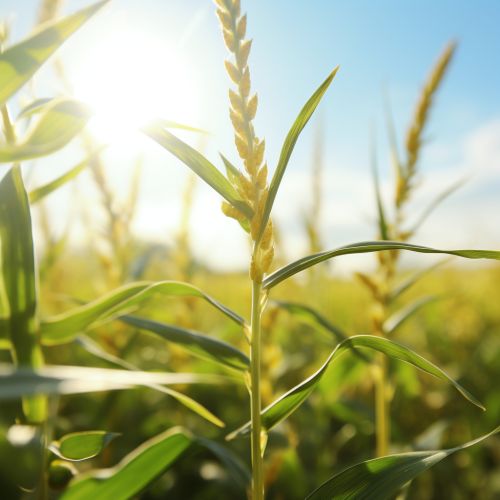The Biological Mechanisms of Plant Response to Drought Stress
Introduction
Drought stress is a significant environmental factor that affects the growth and development of plants. It is a type of abiotic stress that can cause severe damage to plants, leading to reduced crop yields and quality. The biological mechanisms of plant response to drought stress involve a complex network of physiological, biochemical, and molecular processes. These mechanisms allow plants to perceive, signal, and respond to water deficit conditions, thereby enhancing their survival and productivity under drought stress.
Physiological Responses
Plants exhibit a range of physiological responses to drought stress. These responses are primarily aimed at reducing water loss and maintaining water balance within the plant. One of the primary physiological responses is the closure of stomata, the tiny pores on the leaf surface through which water is lost via transpiration. Stomatal closure reduces water loss and helps maintain the plant's water status under drought conditions.


Another important physiological response is the alteration in root architecture. Under drought conditions, plants often develop deeper and more extensive root systems to access water from deeper soil layers. This response is mediated by various plant hormones, including abscisic acid (ABA) and auxins.
Biochemical Responses
Biochemical responses to drought stress involve the production of various metabolites that help plants cope with water deficit conditions. These include osmolytes, antioxidants, and stress proteins.
Osmolytes, such as proline and trehalose, are small organic compounds that accumulate in plant cells under drought stress. They help maintain cell turgor and protect cellular structures from damage caused by dehydration.


Antioxidants, such as ascorbic acid and glutathione, are produced in response to oxidative stress caused by drought. They neutralize reactive oxygen species (ROS) and prevent oxidative damage to cellular components.
Stress proteins, including heat shock proteins and late embryogenesis abundant (LEA) proteins, are also produced under drought stress. These proteins protect other proteins from denaturation and aggregation caused by dehydration.
Molecular Responses
At the molecular level, plants respond to drought stress by altering the expression of a large number of genes. These include genes encoding transcription factors, protein kinases, and other regulatory proteins that control the plant's response to drought.
One of the key molecular responses to drought stress is the activation of ABA-dependent and ABA-independent signaling pathways. These pathways regulate the expression of drought-responsive genes and control various physiological and biochemical responses to drought.


Another important molecular response is the production of small RNAs, including microRNAs and small interfering RNAs. These small RNAs regulate gene expression at the post-transcriptional level and play a crucial role in the plant's response to drought stress.
Genetic and Epigenetic Regulation
The plant's response to drought stress is also regulated at the genetic and epigenetic levels. Genetic regulation involves changes in gene expression, while epigenetic regulation involves changes in DNA methylation, histone modification, and chromatin remodeling.
Several drought-responsive genes have been identified in various plant species. These genes encode proteins that are involved in various aspects of the plant's response to drought, including signal perception, signal transduction, and the activation of physiological and biochemical responses.
Epigenetic regulation of drought response involves changes in the chromatin structure that affect gene expression. For example, DNA methylation and histone modification can alter the accessibility of genes to the transcription machinery, thereby influencing their expression under drought conditions.


Plant Breeding for Drought Tolerance
Understanding the biological mechanisms of plant response to drought stress has important implications for plant breeding. By identifying and manipulating genes involved in drought response, plant breeders can develop new crop varieties with improved drought tolerance. This can help increase agricultural productivity and sustainability in regions affected by drought.
